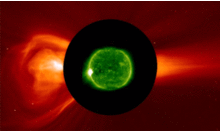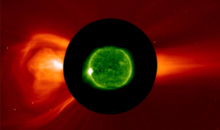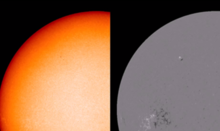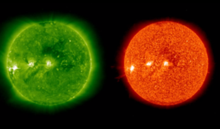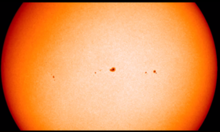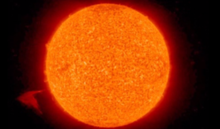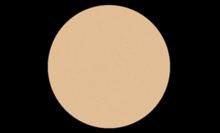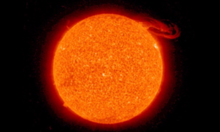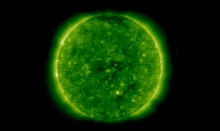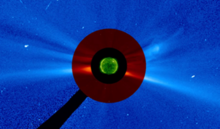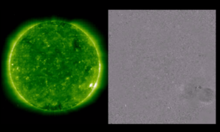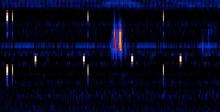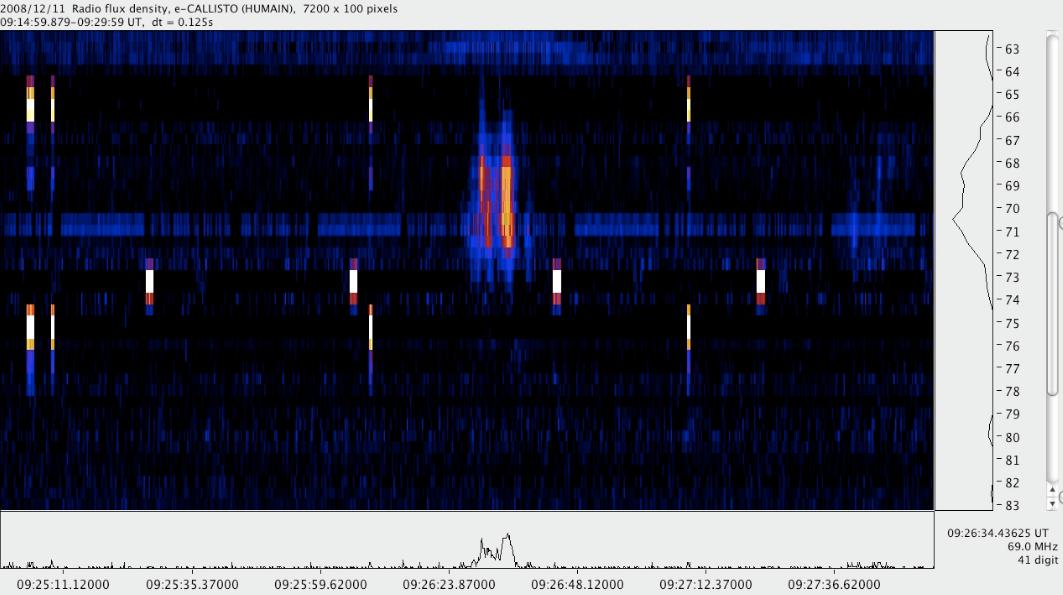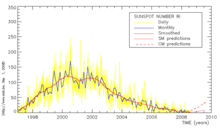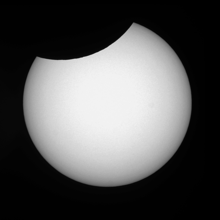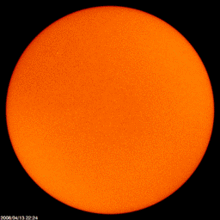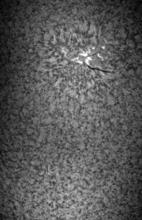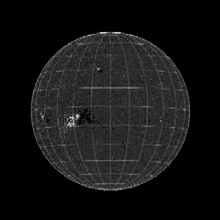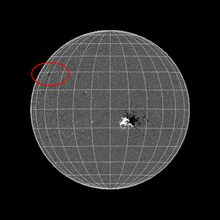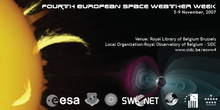news
Submitted on 2008-12-31A compilation of the most memorable space weather moments of 2008 can be found underneath. Using the fantastic (J)Helioviewer software, a ***MOVIE*** was created containing one or more clips of each event. Usually, images obtained by SOHO and the STEREO spacecraft were used.
Submitted on 2008-09-18
|
The sunspot number is the oldest index for solar activity. The International Sunspot Index is the sunspot number calculated by the World Data Center for the sunspot index. The number has different appearances depending on the extent of the used data, the date of calculation, the time period over which we take a mean, the used method. We briefly present the different daily sunspot numbers.
|
| Click on the titles to get the info behind it. |
|
Submitted on 2008-08-01
A new camera recently installed at the Uccle Solar Equatorial Table spotted the Moon in front of the Sun at 13:13. The picture was taken in normal visible (white) light, to study the photosphere of the sun. Note the complete lack of sunspots due to solar minimum.
|
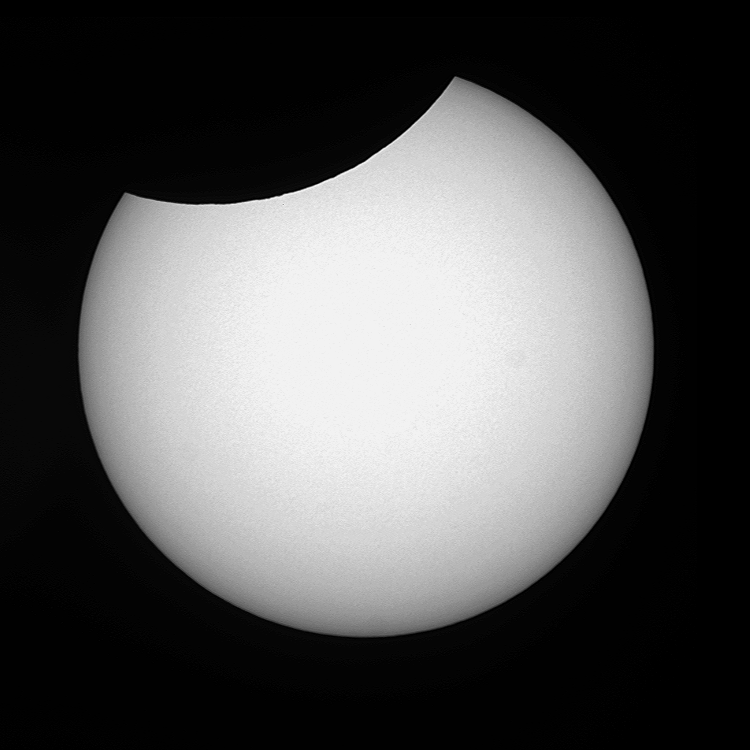 |
|
|
Submitted on 2008-04-14A second sunspot of solar cycle 24 popped up on April 13, 2008.
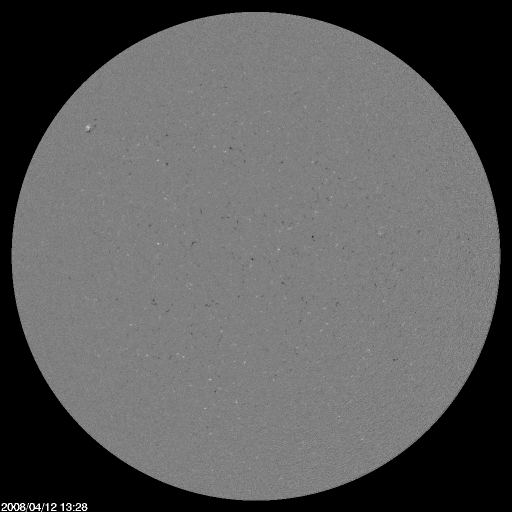
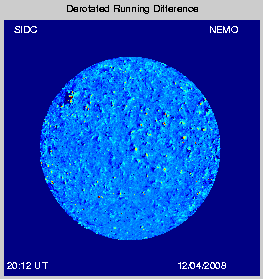
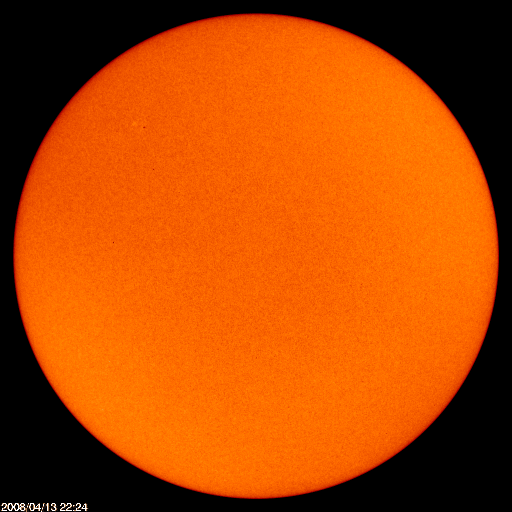
Submitted on 2008-03-17On January 07, 2008, a brand new camera from the Uccle observatoria catched the Sun in the H-alpha wavelength.
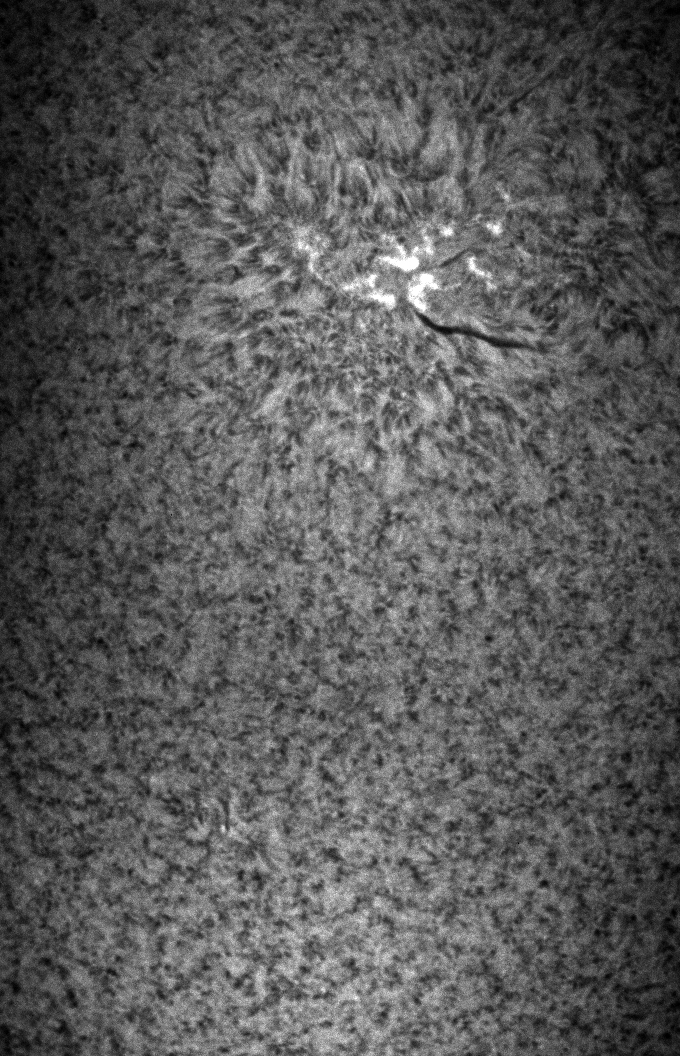
Submitted on 2008-01-08On Jan 4, 5 observatoria of the SIDC world wide network noticed a high-latitude sunspot with a magnetic configuration associated with the next solar cycle.
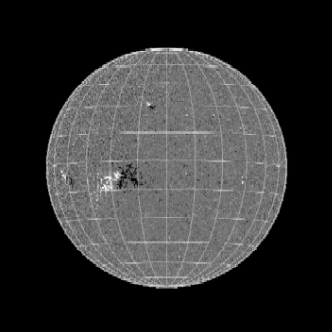
Submitted on 2007-12-13
| An area in the northern hemisphere of the solar disk at a rather high latitude with a leading negative and trailing positive polarity is spotted: this could be the first indication of the start of solar cycle 24! |
|
|
Submitted on 2007-07-03
From November 5 to 9, 2007, scientists from all over the world will gather in Brussels to discuss space weather. This is the second time THE European space weather event takes place in Belgium.
The SIDC, part of the Royal Observatory of Belgium (ROB) takes care of the local organisation. The SIDC is well placed for this task as a space weather research and service center. The conference is hosted by the Royal Library of Belgium, like the ROB itself one of the 10 federal scientific institutes under the umbrella of the Belgian Science Policy.
Pages
Zircon - This is a contributing Drupal Theme
Design by
WeebPal.

